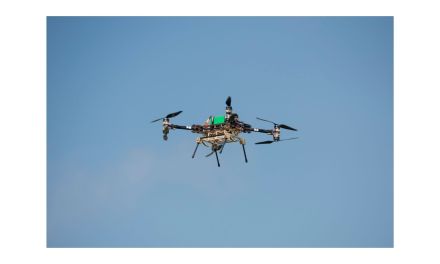A groundbreaking study has recently been introduced, promising significant advancements in photovoltaic (PV) technology for space applications. Lead researchers Dr. Sandra Correia (University of Aveiro and Instituto de Telecomunicações) and Professor Rute Ferreira (University of Aveiro and CICECO _ Aveiro Institute of Materials) along with Dr. Lianshe Fu and Professor Paulo André (University of Lisbon and Instituto de Telecomunicações) have developed a prototype with enhanced efficiency silicon-based PV cells for powering spacecraft, using lanthanide-based downshifting layers (DSLs). This study, published in the reputable journal Optical Materials: X, presents a sophisticated yet practical way to harness more solar energy in space, vital for long-term missions.
Multijunction solar cells have long been the standard for space applications due to their high power conversion efficiency; however, their complex manufacturing process and high cost drive the need for more cost-effective alternatives like silicon-based PV cells. Dr. Sandra Correia explains, “One of the limitations on solar energy conversion is the mismatch between the solar spectrum and the absorption of the PV technology in use.” The research team’s work focuses on closing the efficiency gap by integrating lanthanide-doped hybrid materials as DSLs. These layers are designed to convert ultraviolet light, more prevalent in space, into wavelengths that silicon cells can more efficiently convert into electricity.
Professor Rute Ferreira highlights the impact of their findings: “Electrical measurements on the PV cell, done before and after the deposition of the DSLs, confirm the positive effect of the coatings on the device performance.” This enhancement is achieved without altering the existing cell designs, thus providing a scalable solution to upgrade numerous satellite systems without substantial redesign or investment.
Moreover, the materials used for the DSLs, characterized by their high luminescence and photostability, promise durability and reliable performance under the harsh conditions of space. Dr. Correia adds, “This proof of concept was done using a complex incorporated into a hybrid host because of its very large light-emitting efficiency and stability.”
The application of these layers to large-area PV cells marks a significant milestone, representing the largest active area reported so far for such technologies in space applications. Dr. Ferreira remarks on the broader implications, “These results may foster the interest of the research community to invest their efforts on these type of PV complementary structures to be used in the space environment.”
This research not only paves the way for more efficient use of solar energy in space but also reduces the reliance on expensive multijunction cells, potentially lowering the cost of satellite and spacecraft production. The implications for future space missions are profound, extending the viability of long-duration missions and enhancing the sustainability of space exploration.
In summary, the work of Correia et al. offers a promising horizon for the future of space-based solar power systems. By optimizing the spectral match between solar radiation and silicon cell absorption, these lanthanide-based DSLs stand as a promising strategy to power missions beyond Earth, marking a pivotal advancement in both aerospace technology and our quest for sustainable energy solutions.
Journal Reference
Sandra F.H. Correia, Lianshe Fu, Paulo S. André, Rute A.S. Ferreira, “Solar spectral management in space using lanthanide-based downshifting layers,” Optical Materials: X, 21, 100280, 2024. DOI: https://doi.org/10.1016/j.omx.2023.100280
About The Authors

Sandra F. H. Correia received her Ph.D. degree in Physics in University of Aveiro, Portugal, in 2017. She was a researcher in the Department of Physics at the University of Aveiro and CICECO – Aveiro Institute of materials from 2017 to 2021 working on luminescent solar concentrators and downshifting layers. Nowadays, she is a researcher in Instituto de Telecomunicações, working on photovoltaics complementary devices for space applications. Her scientific interests are mainly focused on light-emitting materials for applications in photonic applications, namely, sensing, luminescent solar concentrators and down-shifting layers.

Rute A. S. Ferreira got her PhD in Physics (2002), and the Agregação (2021) in Physics from the Universidade de Aveiro (UA), Portugal. Currently, she is a Full Professor in the department of physics at UA. She is vice-director of CICECO – Aveiro Institute of Materials and a member of the general board of UA. Her current scientific interests are focused on the optoelectronic studies of organic/inorganic hybrids foreseeing applications in the fields of optoelectronics and green photonics (solid-state lighting, and integrated optics), luminescence magnetic materials (single ion/molecule magnets) and photovoltaics (luminescent solar concentrators and down-shifting layers). In the last decade, she expanded her interests to luminescence thermometry focused on primary thermometers and to the application of luminescent materials for the internet of Things (IoT) featuring optical smart tags for traceability and sensing.













































